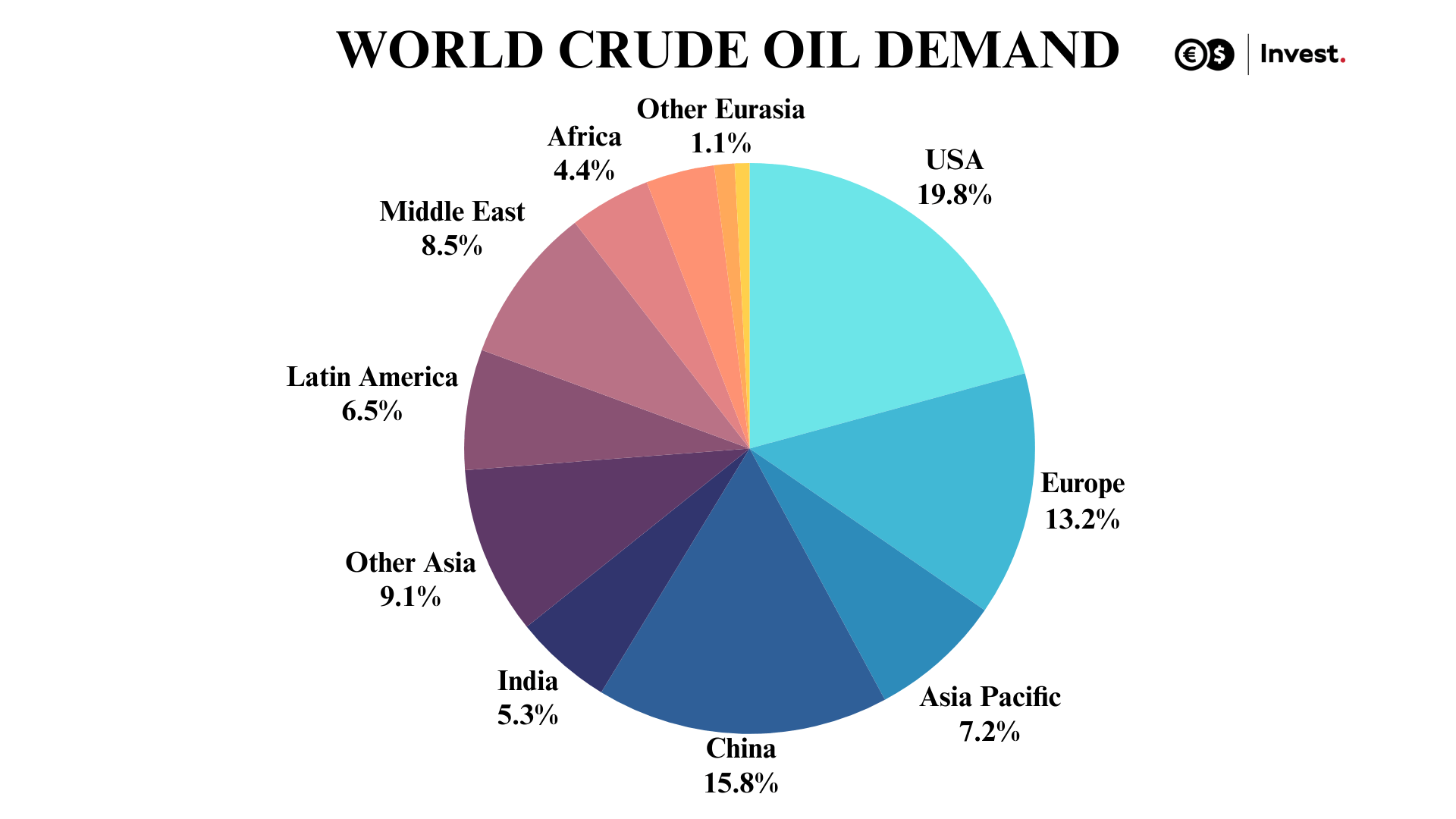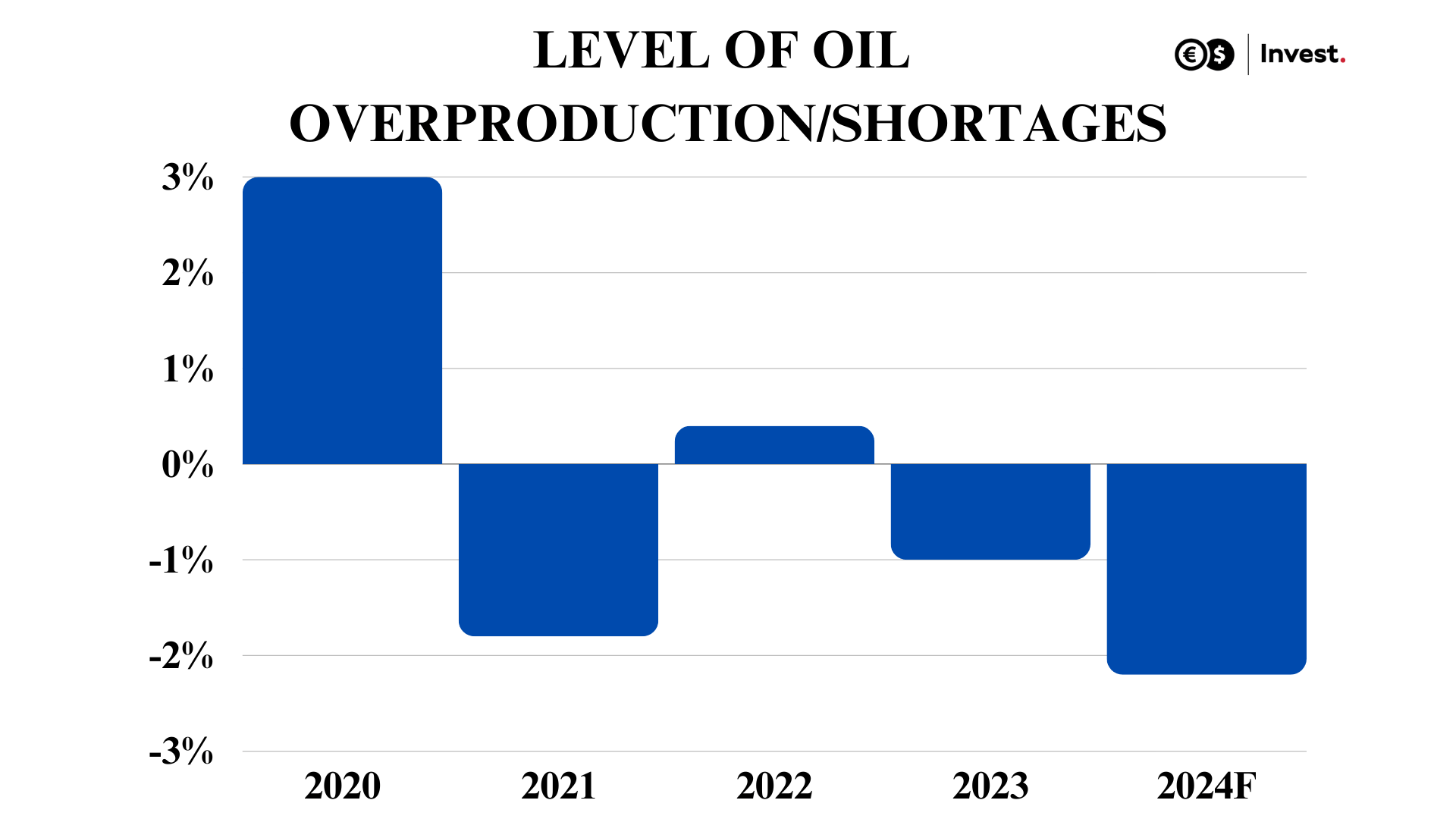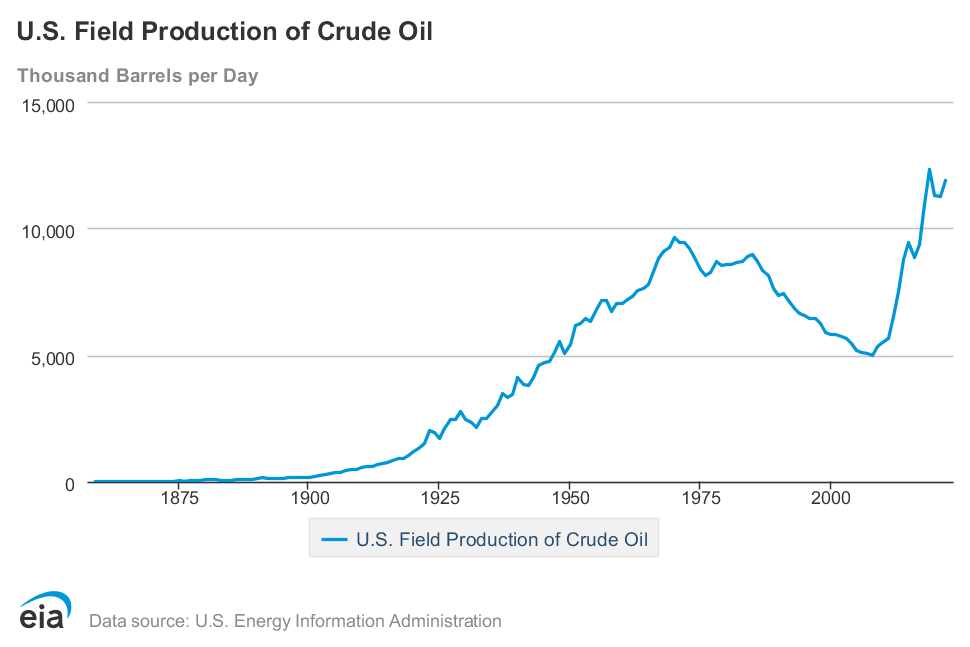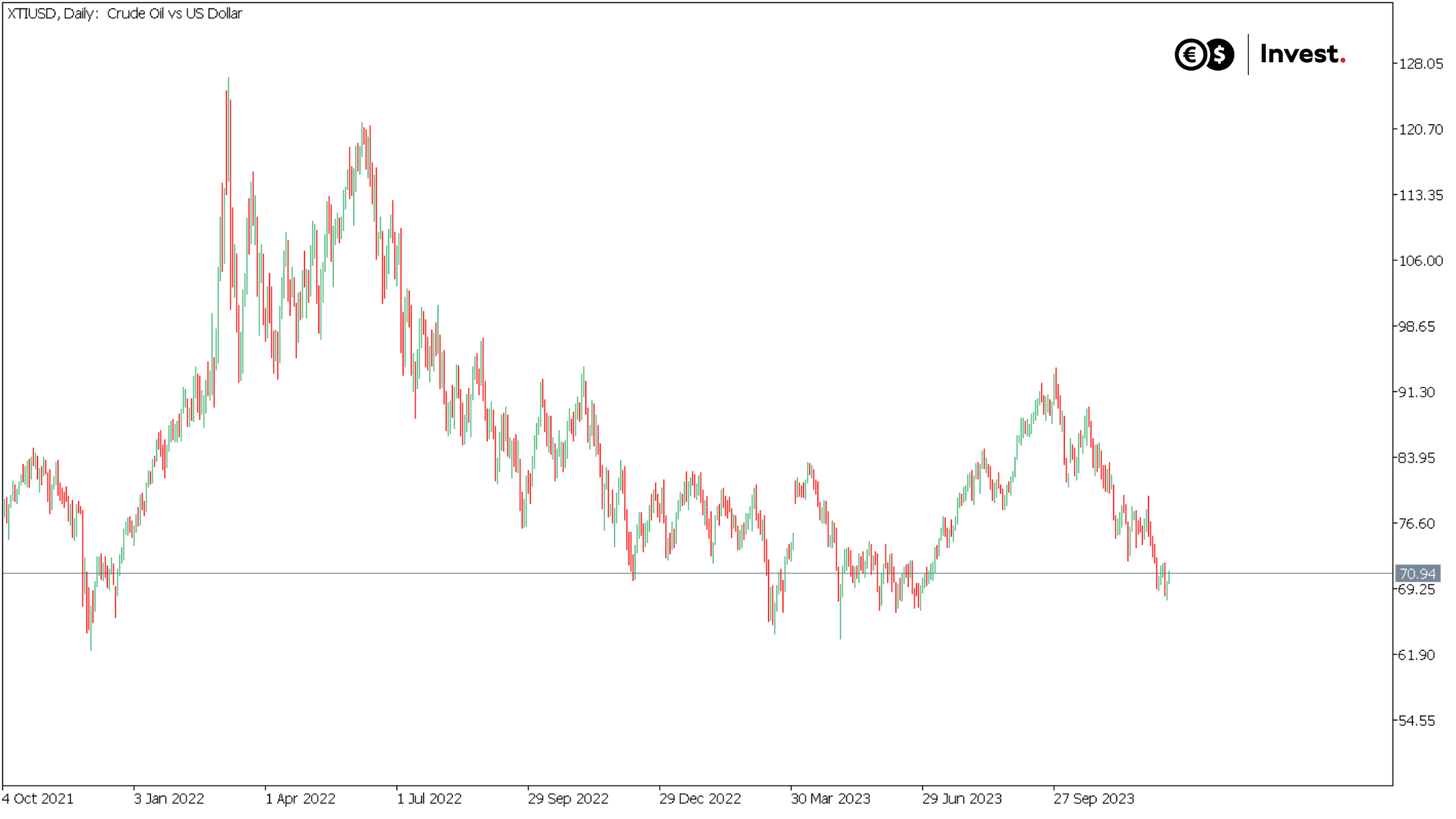It has not been known for a long time that the oil market is highly concentrated in just a few production centres, such as OPEC and, with Russia, OPEC+. It is one of the most concentrated markets in the world. However, we must not forget that the price of this commodity, which has fallen by 25% over the past three months, is influenced by a clash between demand and supply. Therefore, let's take a look at the current situation in this market, based on the last three key reports, to understand what the forecast is for the oil market in 2024.
Table of contents:
- Oil market situation - OPEC report
- US EIA report and international IEA report
- Oil price forecast for 2024
Oil market situation - OPEC report
Although the United States is the largest single producer of the commodity, accounting for as much as 19.8% of global output, it is no match for the OPEC cartel, which accounts for 33.1% of global output and together with Russia (the so-called OPEC+) reaches as much as 43.6%. This makes the price of oil largely dependent on the cartel's decisions to increase or reduce crude output.

Source: OPEC data, Conotoxia
The United States also leads the oil market in terms of demand, consuming 19.4% of global production. China is the second consumer with 15.8% and the European Union third with 12.9%. The situation in these economies has the most important impact on global oil demand.

Source: OPEC data, Conotoxia
According to the latest OPEC data, which is largely based on future orders and multi-year contracts, analysts forecast that demand in OECD countries will remain virtually unchanged in the coming year. Despite a gentle downward revision of demand forecasts by OPEC analysts, global demand will increase by 2.2% (against a 2.5% y-o-y increase in 2023) due to the growth of India (up 4.1%) and China (up 3.6%) and other Asian countries (up 3.3%).
OPEC+ policies have led to a 2% year-on-year reduction in global oil production in 2023. If the cartel decides not to increase production, at current production levels, the oil deficit could reach an average of 2.2% of the volume of global demand in 2024. In percentage terms, this is similar to the shortfall in 2021, when oil was heavily priced. This means that throughout 2024, the major economies would have to draw on their strategic stocks of the commodity.

Source: OPEC data
US EIA report and international IEA report
At the end of 2023, despite the shortages that are occurring, we have seen a significant drop in crude prices, which seems to be due to the influence of two factors. According to EIA data, a historically large increase in US production is now taking place, using as much as 94% of its capacity by the end of 2023. The unblocking of supply chains has meant that, despite production constraints, we have not experienced significant local shortages such as those that occurred during the pandemic. We are now in a situation where we have reached the upper limit of production capacity, and growing expectations of shortages may contribute to the oil price returning to its strong upward trend next year.
Nonetheless, the EIA's latest report lowered its forecast for the average price of WTI crude oil for 2024 from USD 93 per barrel to USD 83/b. As we can read in the report, "We forecast that the spot price of Brent crude will increase from an average of USD 78/b in December to an average of USD 84/b in the first half of 2024, thanks in part to the recently announced OPEC+ production cuts."

Source: EIA
A report by the International Energy Agency (IEA) notes that global demand growth in Q4 2023 has been revised down by almost 400 kb/d (0.4% of global demand), with Europe accounting for more than half of the revision, and this slowdown is expected to continue into 2024. Current US oil production growth continues to exceed expectations, exceeding 20 million barrels per day. This, combined with record production from Brazil and Guyana and a surge in Iranian supplies, will increase global production by 1.8 million, to 101.9 million barrels per day this year. Non-OPEC+ countries are expected to continue global production growth into 2024, which could offset the current OPEC cartel cuts.
The report indicates that there is currently a noticeable shortage in the oil market, which translates into a decline in stock volumes. Observed global crude stocks declined by 19.6 million barrels in October. Although crude oil reserves remained largely unchanged, total petroleum product stocks fell for the first time in four months, reversing the trend from Q3 this year.
When asked why we are seeing a decline in the price of oil in the markets despite the shortages, the report highlights that: "the strength of non-OPEC+ supply has coincided with decelerating global oil demand growth. The extension of OPEC+ production cuts until Q1 2024 has done little to support oil prices. By early December, they were down around $25 per barrel from their September peaks, reaching their lowest level in six months."
Oil price forecast for 2024
In summary, each report concludes that the current decline in oil prices is the result of declining expectations for next year's demand for the commodity. Nevertheless, each report points out that there are currently shortages in the market, forcing major economies to use their strategic resources. According to OPEC data, the level of shortages even exceeds that of 2021, when there was a dramatic increase in oil commodity prices. The situation where countries are supplementing their shortages from strategic sources cannot last forever, and the decline in demand is mainly seen in OECD countries rather than in the fastest growing economies such as India, China and other Asian countries. Moreover, by the rising expectations of a weakening US dollar in 2024, there is a high probability that we will see a reversal of the negative trend in the oil market, with the potential to exceed USD 100 per barrel.

Source: Conotoxia MT5, XTIUSD, Daily
Grzegorz Dróżdż, CAI MPW, Market Analyst of Conotoxia Ltd. (Conotoxia investment service)
Materials, analysis and opinions contained, referenced or provided herein are intended solely for informational and educational purposes. Personal opinion of the author does not represent and should not be constructed as a statement or an investment advice made by Conotoxia Ltd. All indiscriminate reliance on illustrative or informational materials may lead to losses. Past performance is not a reliable indicator of future results.
CFDs are complex instruments and come with a high risk of losing money rapidly due to leverage. 72.95% of retail investor accounts lose money when trading CFDs with this provider. You should consider whether you understand how CFDs work and whether you can afford to take the high risk of losing your money.


